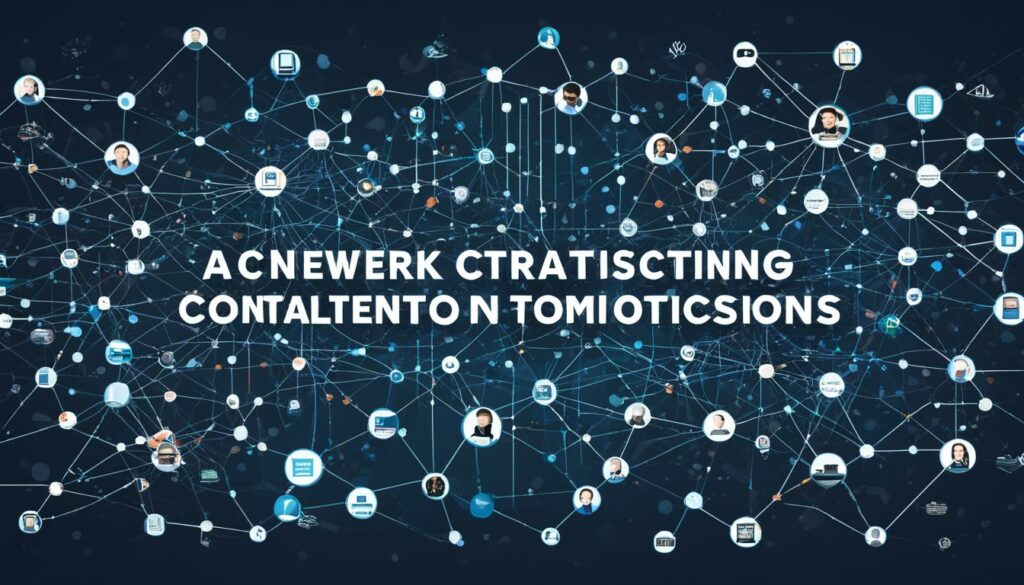Welcome to the ultimate guide on mastering WordPress Multisite administration. If you are managing multiple websites, then WordPress Multisite is your secret weapon for streamlining your workflow and maximizing efficiency. With this powerful feature, you can easily create and manage multiple websites from a single dashboard, saving time, effort, and hosting costs.
Whether you are a large organization, an educational institution, a news and media organization, an e-commerce website, a community network, or even just a personal website owner, WordPress Multisite has got you covered. It offers a wide range of benefits, from consistent branding and easy updates to managing user accounts and implementing security best practices.
In this guide, we will walk you through everything you need to know about WordPress Multisite, including its key features, best practices for administration, use cases, advantages, limitations, and a step-by-step guide to setting it up. By the end of this article, you’ll be equipped with all the knowledge you need to optimize your WordPress Multisite management and take your website administration to the next level.
Key Takeaways:
- WordPress Multisite is a powerful feature that allows you to create and manage multiple websites from a single dashboard.
- It is ideal for large organizations, educational institutions, news and media organizations, e-commerce websites, community networks, membership websites, and personal websites.
- WordPress Multisite offers benefits such as saving on hosting costs, consistent branding, easy updates, streamlined user management, and implementing security best practices.
- Setting up WordPress Multisite requires a hosting provider that supports it, installing WordPress, and making code modifications.
- Consider the advantages, limitations, and requirements of WordPress Multisite to decide if it is the right fit for your business.
What is WordPress Multisite?
WordPress Multisite is a powerful feature that allows you to manage multiple websites from a single dashboard. With WordPress Multisite, you can easily create and run multiple websites, eliminating the need for separate installations and logins for each site. This centralized management system simplifies the process of managing multiple websites and provides a seamless user experience.
One of the key benefits of WordPress Multisite is the ability to streamline website management by using a single dashboard. Instead of switching between different websites and dashboards, you can access and control all your sites from one place. This saves time and effort, allowing you to efficiently manage your websites and focus on other important tasks.
Each website in a WordPress Multisite network can have its own subdomain or domain, which provides flexibility in terms of organization and branding. For example, you can have a main domain for your company and create subdomains for different departments or divisions. Alternatively, you can assign separate domains to each website for a more distinct online presence.
With WordPress Multisite, you have the power to scale your online presence and manage multiple websites seamlessly. Whether you’re a business owner, a web developer, or an agency managing client sites, WordPress Multisite offers a convenient solution for efficient website management.
Key Features of WordPress Multisite
WordPress Multisite offers a range of key features that make it a powerful tool for managing multiple websites from a single installation. Whether you’re a large organization, educational institution, or e-commerce business, these features can streamline your website management process and enhance your online presence.
Run a Network of Websites
With WordPress Multisite, you can effortlessly run a network of websites from a single dashboard. This means you can create and manage multiple websites using a unified interface, saving you time and effort.
Create a Network of Directories or Subdomains
WordPress Multisite allows you to create a network of directories or subdomains for your websites. This enables you to organize your websites effectively and gives each site its own unique identity within the network.
Replicate Functionalities Across Websites
One of the standout features of WordPress Multisite is the ability to replicate functionalities across websites. This means that you can install themes, plugins, and other essential elements once, and they will be available across all the websites within your network.
Customize Branding for Each Website
With WordPress Multisite, you have the flexibility to customize the branding of each website in your network. This ensures consistent and cohesive branding across all your websites, reinforcing your brand identity.
Easily Update WordPress, Themes, and Plugins
Managing updates for multiple websites can be time-consuming, but WordPress Multisite simplifies this process. You can easily update WordPress, themes, and plugins across all your websites from a central location, ensuring that your websites are always up to date and secure.
Manage User Accounts with Different Roles and Permissions
WordPress Multisite provides robust user management capabilities, allowing you to assign different roles and permissions to users across your network. You have full control over who can access and modify the websites in your network, ensuring optimal security and privacy.
Host Your Multisite on a Shared Server
When you use WordPress Multisite, you have the option to host your network of websites on a shared server. This can significantly reduce hosting costs while maintaining excellent website performance and security.

As you can see, WordPress Multisite offers a wide range of key features that allow you to run a network of websites, customize branding, manage user accounts, and more. Whether you’re managing multiple websites for an organization or simply seeking a more efficient way to maintain your online presence, WordPress Multisite is a powerful solution.
Best Practices for WordPress Multisite Administration
When it comes to managing a WordPress Multisite network effectively, following best practices can make all the difference. By implementing these strategies, you can ensure efficient management, streamline workflows, and enhance the overall performance of your websites.
Centralized Dashboard
Utilizing a centralized dashboard is key to effectively managing multiple websites within a WordPress Multisite network. It provides a single interface where you can easily access and control all your websites, saving you time and effort.
Standardize Plugins and Themes
To maintain consistency across your websites, it’s important to standardize the use of plugins and themes. By selecting a set of approved plugins and themes, you can ensure a cohesive user experience and simplify the update process.
Automate Tasks
Automation is a game-changer for WordPress Multisite administration. Automate routine tasks such as updates and backups to save time and reduce the potential for errors. This enables you to focus on more important aspects of your websites.
Use Version Control
Implementing version control allows you to track and manage changes within your Multisite network. This ensures that any modifications to themes, plugins, or code can be easily monitored, rolled back if needed, and seamlessly deployed across all websites.
Content Management System
Implementing a robust content management system (CMS) ensures streamlined content creation and management. With a CMS, you can easily create, edit, and publish content across your entire network, providing a consistent experience for your users.
Monitor Site Analytics
Regularly monitoring site analytics is crucial to understanding how your websites are performing. Utilize tools such as Google Analytics to gain insights into user behavior, traffic sources, and conversion rates. This information can help you make data-driven decisions to improve your websites’ performance.

Backup Strategy
Implementing a reliable backup strategy is essential to protect your websites and their data. Regularly back up your entire Multisite network to secure external servers or cloud storage. This ensures that in the event of a data loss or security breach, you can easily restore your websites to a previous state.
Staging Environment
Utilizing a staging environment allows you to test changes and updates without affecting your live websites. It provides a safe space to experiment, identify and resolve any issues, and ensure seamless deployments to your production sites.
Security Best Practices
Implementing security best practices is paramount to protect your WordPress Multisite network from potential threats. Regularly update WordPress core, themes, and plugins, use strong passwords and two-factor authentication, and employ security plugins to fortify your websites against vulnerabilities.
By implementing these best practices, you can optimize your WordPress Multisite network administration, ensure a smooth workflow, and enhance the performance and security of your websites.
Use Cases for WordPress Multisite
WordPress Multisite is a versatile feature that finds its utility across various industries and organizations. Here are some common use cases where WordPress Multisite excels:
Corporate Websites
In the corporate world, WordPress Multisite is a valuable tool for managing multiple websites under a centralized dashboard. This approach ensures consistency in branding and content across all corporate websites, enhancing the overall online presence.
Educational Institutions
WordPress Multisite is widely adopted by educational institutions to simplify the management of departmental websites and student/faculty blogs. It allows for effortless coordination and collaboration between different departments and faculty members.
News and Media Organizations
News and media organizations leverage WordPress Multisite to manage multiple websites catering to different niches within their industry. Whether it’s news portals, blogs, or microsites, WordPress Multisite offers an efficient solution for maintaining a diverse online presence.
E-commerce Websites
E-commerce businesses benefit from WordPress Multisite by using it to manage multiple online stores from a single dashboard. This simplifies the process of product management, inventory tracking, and order fulfillment, leading to improved operational efficiency.
Community Networks
WordPress Multisite serves as an excellent platform for building community networks, such as social networks or online marketplaces. It facilitates the creation of a centralized hub where users can interact, share resources, and build a thriving community.
Membership Websites
Membership websites can effectively manage multiple membership sites using WordPress Multisite. This approach enables seamless membership management, content delivery, and member communication, enhancing the overall user experience.
Personal Websites
For individuals seeking centralized management of their multiple websites, WordPress Multisite provides an ideal solution. By migrating their personal websites to a Multisite installation, users can efficiently manage all their online properties from a single dashboard.
WordPress Multisite Advantages
Discover the numerous advantages of using WordPress Multisite for managing multiple websites. With its centralized management, easy updates, cost-effective hosting, consistent branding, simplified user management, security updates, streamlined content creation, site performance monitoring, and data protection features, WordPress Multisite offers a range of benefits that can enhance your website management process.
Centralized Management
WordPress Multisite allows you to manage multiple websites from a single dashboard, providing a centralized interface for adding, editing, and monitoring your websites. This enables you to save time and effort by eliminating the need to log in to multiple platforms.
Easy Updates
With WordPress Multisite, you can easily update WordPress core, themes, and plugins across all your websites at once. This ensures that your websites stay up-to-date with the latest features, security patches, and bug fixes, without the need for manual updates on each individual site.
Cost-Effective Hosting
Hosting multiple websites on a single server with WordPress Multisite can significantly reduce hosting costs compared to hosting each site separately. By utilizing shared hosting, you can save money without compromising performance or security.
Consistent Branding
WordPress Multisite allows you to maintain consistent branding across all your websites, ensuring a cohesive user experience. You can easily apply the same themes, templates, and design elements to all your websites, reinforcing your brand identity.
Simplified User Management
Managing user accounts becomes simpler with WordPress Multisite. You can control access and permissions for multiple websites from a single dashboard, making it easier to add or remove users, assign roles, and manage user settings.
Security Updates
WordPress Multisite simplifies the application of security updates by allowing you to manage them centrally. This ensures that all your websites receive the latest security patches, reducing the risk of vulnerabilities and protecting your data.
Streamlined Content Creation
By utilizing a content management system within a WordPress Multisite setup, you can streamline content creation and management. With shared media libraries, templates, and workflows, you can efficiently create and distribute content across multiple websites.
Site Performance Monitoring
WordPress Multisite provides built-in tools and plugins for monitoring the performance of your websites. You can track site speed, uptime, and user engagement metrics to identify areas for improvement and ensure optimal user experience.
Data Protection
Protecting your data is crucial, and WordPress Multisite offers built-in backup strategies and security best practices. With regular backups, secure user authentication, and vulnerability scanning, you can safeguard your websites and their valuable data.

With its range of advantages, WordPress Multisite is an excellent choice for managing multiple websites efficiently and effectively. From centralized management to streamlined content creation, this feature offers a comprehensive solution for website management.
WordPress Multisite Limitations
While WordPress Multisite offers numerous benefits for managing multiple websites, it does have a few limitations that you should be aware of. Understanding these limitations can help you plan and optimize your Multisite setup effectively.
Shared Database
One of the main limitations of WordPress Multisite is that all the websites within the network share the same database. This means that if one website experiences downtime or encounters a problem, it can potentially affect the performance of other websites within the Multisite network as well.
Impact on Site Downtime
As mentioned earlier, since all websites in a WordPress Multisite setup share the same database and server resources, any site downtime or technical issues can have an impact on the availability and functionality of other websites within the network. It is essential to choose a reliable hosting provider and implement proper maintenance and backup strategies to minimize downtime risks.
Plugin Compatibility
Another limitation to consider is plugin compatibility. While many plugins work seamlessly with WordPress Multisite, some may not be compatible or may require additional configuration to function correctly. It is crucial to thoroughly test plugins before installing them on your Multisite network to ensure compatibility and avoid any conflicts.
Hosting Provider Support
Not all hosting providers fully support WordPress Multisite. Some hosting plans may place restrictions on the number of websites you can have or limit the resources available for a Multisite network. Before choosing a hosting provider, make sure they explicitly offer support for WordPress Multisite and provide the necessary resources for your network’s needs.
Despite these limitations, many organizations find WordPress Multisite to be a valuable tool for managing multiple websites efficiently. By understanding these limitations and planning accordingly, you can overcome potential challenges and make the most of the benefits that Multisite offers.
Step-by-Step Guide to Setting up WordPress Multisite
Setting up WordPress Multisite is a straightforward process that involves a few essential steps. Follow this step-by-step guide to get your WordPress Multisite up and running:
Step 1: Choose a Hosting Provider
First, ensure that your hosting provider supports WordPress Multisite. Not all hosting providers offer this feature, so it’s crucial to select a provider that meets your needs. Look for hosting providers that specifically mention WordPress Multisite compatibility.
Step 2: Install WordPress
If you haven’t already installed WordPress on your hosting server, follow the standard installation process. Most hosting providers offer a one-click WordPress installation option, making it quick and easy to set up your base WordPress site.
Step 3: FTP Access and Code Modifications
You will need FTP access to your WordPress installation to make the necessary code modifications for enabling Multisite. FTP (File Transfer Protocol) allows you to access your hosting server’s files and directories.
Pro Tip: To set up FTP access, you may need to consult your hosting provider’s documentation or contact their support team for assistance.
Step 4: Enable Multisite and Configure
Once you have FTP access, find and open the wp-config.php file in the root directory of your WordPress installation. Add the following line of code just before the line that says /* That's all, stop editing! Happy blogging. */:
define( 'WP_ALLOW_MULTISITE', true );
Save the wp-config.php file and close it. Now, log in to your WordPress dashboard as an administrator. Navigate to Tools > Network Setup. This is where you will configure your Multisite installation.
Choose between setting up your sites as subdomains or subdirectories. Enter the desired network title and the network admin email address. Click the Install button to complete the setup process.
Step 5: Activating Permalinks
After setting up Multisite, you need to activate permalinks. This will ensure that the URLs for your network’s sites are search engine friendly and user-friendly. To activate permalinks, go to Settings > Permalinks in your WordPress dashboard and select a permalink structure that suits your needs. Click the Save Changes button to apply the new permalink structure.
Step 6: Configure Plugins for Multisite
Next, configure the plugins you want to use for your Multisite network. You can activate and configure plugins just like you would on a regular WordPress site. However, it’s important to choose plugins that are compatible with Multisite and cater to the specific needs of your network.
Step 7: Manage Your Multisite Network
Once your WordPress Multisite setup is complete, you can start adding new sites, managing existing sites, and controlling user access and permissions through the network admin dashboard. Use the powerful features and tools available in the Multisite network to efficiently manage multiple websites from a single location.
Congratulations! You’ve successfully set up a WordPress Multisite network and are ready to unleash the power of centralized website management.
In the next section, we’ll explore the requirements for WordPress Multisite to ensure a smooth setup process.
| Step | Description |
|---|---|
| Step 1 | Choose a Hosting Provider |
| Step 2 | Install WordPress |
| Step 3 | FTP Access and Code Modifications |
| Step 4 | Enable Multisite and Configure |
| Step 5 | Activating Permalinks |
| Step 6 | Configure Plugins for Multisite |
| Step 7 | Manage Your Multisite Network |
Requirements for WordPress Multisite
Before setting up WordPress Multisite, you need to ensure that you have the following requirements in place:
- A hosting provider that supports multiple websites: It is essential to choose a hosting provider that allows you to run a WordPress Multisite network. Make sure your hosting plan can handle the increased demands of managing multiple websites.
- FTP access for code modifications: To set up and customize your WordPress Multisite, you will need FTP access to your website’s files. This access will allow you to make the necessary code modifications for Multisite functionality.
- Use of plugins to enhance functionality and security: WordPress Multisite can be further enhanced through the use of plugins. Install and activate plugins that provide additional features, such as improved user management, enhanced performance, and advanced security measures.
To ensure a smooth setup and efficient management of your Multisite network, meet these requirements before proceeding with the configuration process.
Is WordPress Multisite Right for You?
Deciding whether WordPress Multisite is right for you depends on your business purpose and company structure. Consider the pros and cons below to make an informed decision.
Pros of WordPress Multisite
- Centralized management: With WordPress Multisite, you can easily manage multiple websites from a single dashboard, saving you time and effort.
- Control over multiple websites: You have complete control over the websites in your network, allowing you to apply consistent branding and make changes across all sites simultaneously.
- Potential cost savings: Hosting multiple websites on a single installation can be more cost-effective than managing each site individually.
Cons of WordPress Multisite
- Potential site downtime: If one website in your network experiences issues or goes down, it can affect all the other websites in the network.
- Plugin compatibility: Not all plugins are designed to work seamlessly with WordPress Multisite, so you may encounter compatibility issues.
- Hosting provider support: Not all hosting providers fully support WordPress Multisite, so you need to ensure that your chosen provider is compatible.
Remember to carefully weigh the pros and cons before making a decision on whether to use WordPress Multisite for your business. Consider factors such as your website management needs, technical expertise, and budget.
By evaluating these factors, you can determine whether WordPress Multisite aligns with your goals and objectives.
Business Purpose and Company Structure
Your business purpose and company structure play a crucial role in deciding whether WordPress Multisite is the right choice for you.
If you operate a large organization, manage multiple institutions, own an e-commerce business, or host community or membership websites, WordPress Multisite can provide centralized management and streamline your operations. It allows you to efficiently manage a network of websites under one installation, saving you time and resources.
However, if you have a small business with a single website or do not require centralized management for multiple websites, using WordPress Multisite may not be the best fit. Consider your specific needs and the scope of your website management before making a decision.
Conclusion
WordPress Multisite is a powerful feature that allows you to efficiently manage multiple websites from a single dashboard. By following the best practices for WordPress Multisite administration, you can optimize your website management process and streamline your operations.
With WordPress Multisite, you can benefit from centralized management, making it easier to update WordPress, themes, and plugins across all your websites. You can also save on hosting costs by hosting multiple websites on a shared server. Consistent branding can be achieved effortlessly, ensuring a cohesive online presence for your business.
Efficient website management is crucial for any organization or individual with multiple websites. By utilizing WordPress Multisite, you can effectively manage user accounts with different roles and permissions, monitor site analytics, create a backup strategy, use a staging environment for testing, and implement security best practices to protect your websites.
FAQ
Q: What is WordPress Multisite?
A: WordPress Multisite is a feature that allows you to create and manage multiple websites from a single dashboard.
Q: What are the key features of WordPress Multisite?
A: The key features of WordPress Multisite include running a network of websites from a single installation, creating a network of directories or subdomains, replicating functionalities across websites, customizing the branding of each website, easily updating WordPress, themes, and plugins, and managing user accounts with different roles and permissions.
Q: What are the best practices for WordPress Multisite administration?
A: Best practices for WordPress Multisite administration include using a centralized dashboard to manage all websites, standardizing plugins and themes for consistency, automating routine tasks like updates and backups, using a version control system to track changes, implementing a content management system for streamlined content creation, monitoring site analytics for insights, creating a backup strategy for data protection, using a staging environment for testing, and implementing security best practices to protect against vulnerabilities.
Q: What are some common use cases for WordPress Multisite?
A: WordPress Multisite is commonly used for corporate websites, educational institutions, news and media organizations, e-commerce websites, community networks, membership websites, and personal websites.
Q: What are the advantages of WordPress Multisite?
A: The advantages of WordPress Multisite include centralized management of multiple websites, easy updates of WordPress, themes, and plugins, cost-effective hosting on a shared server, consistent branding across all websites, simplified user management, easy application of security updates, streamlined content creation with a content management system, monitoring site performance for optimal user experience, and data protection through backup strategies and security best practices.
Q: What are the limitations of WordPress Multisite?
A: Some limitations of WordPress Multisite include all websites sharing the same database, potential impact on site downtime if one website goes down, potential plugin compatibility issues, and not all hosting providers supporting Multisite.
Q: What are the requirements for setting up WordPress Multisite?
A: The requirements for setting up WordPress Multisite include a hosting provider that supports multiple websites, FTP access for code modifications, and the use of plugins to enhance the functionality and security of the Multisite setup.
Q: How do I determine if WordPress Multisite is right for my business?
A: Deciding whether WordPress Multisite is right for you depends on your business purpose and company structure. Consider the pros and cons, including centralized management, control over multiple websites, potential site downtime, plugin compatibility, and hosting provider support, to make an informed decision.












